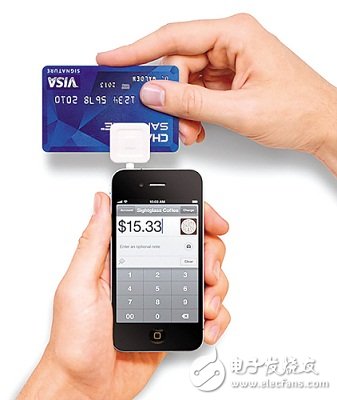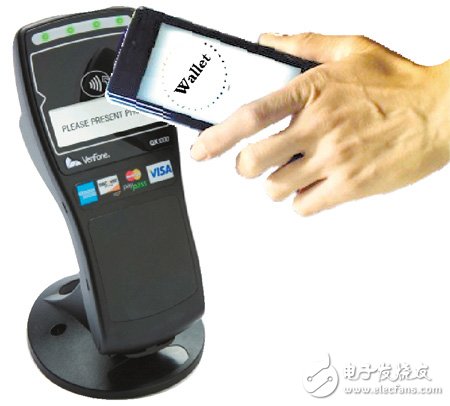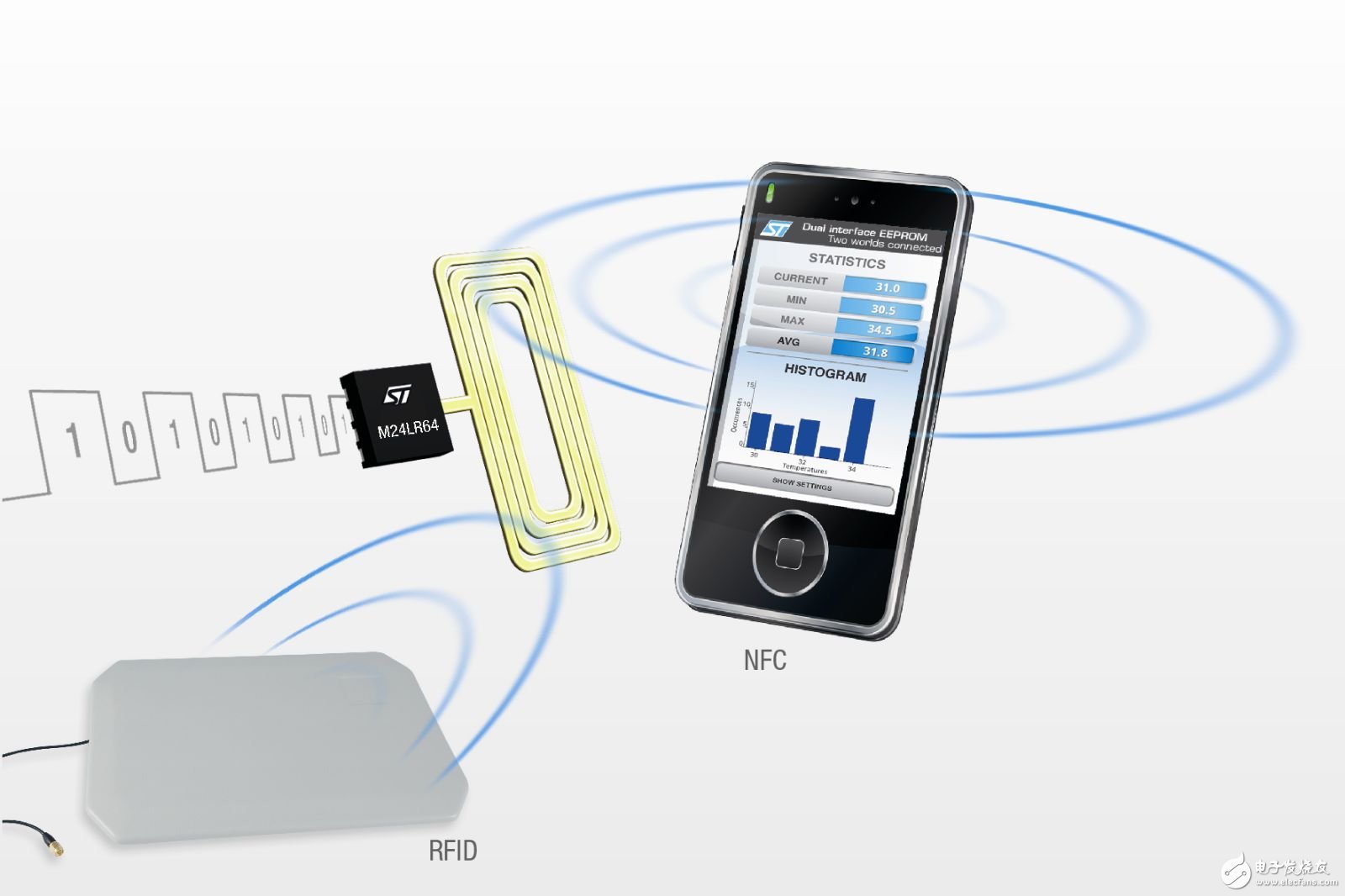So-called technological breakthroughs occur every year, but only a few of them are revolutionary. Near Field Communications (NFC) is still a very new technology, but it has great potential to change our personal and business lives.
What is NFC technology
NFC is a technology that allows wireless point-to-point data transmission between electronic devices. The current device requirement is that the distance between device antennas is within 3/4 inches.

This device requirement brings a key advantage to NFC: security. Through data encryption, even American spies have to stay away from transaction data between NFC devices and are helpless. Its strict security makes many people think that NFC is the hottest, safest and most reliable remote transaction system.
How NFC works
In order to promote the formulation of NFC technology standards, Sony, Nokia, and Philips jointly established the NFC Forum in 2004. NFC is based on Radio Frequency Identification (RFI) technology. RFID uses passive electronic tags (essentially, electronic-to-electronic barcodes) to store data. When used at close range, the RFID reader provides energy to the video identification tag through electromagnetic induction, and the electronic tag then transmits the data to the reader.
The working principle of NFC is very similar. Working at close range, an activated NFC device drives a passive NFC electronic tag through magnetic induction. The difference is that NFC technology can work between two activated or NFC-equipped devices, and has a wider range of applications than fancy bar scanning.

The NFC standard defines how NFC devices work: data is sent and received via a short wave of 13.56MHz. The standard also defines the data transmission rate. Currently supported transmission rates are 106Kbps 212Kbps and 424Kbps. (Not much faster than early Internet modems.) But this is not a bad thing, because NFC data is usually very short; you generally won't send a video to your smartphone, but it is a good way to exchange information with customers in a contact manner.
[Google Wallet (www.google.com/wallet) is a classic example of an NFC payment system. You can make purchases in any store that accepts Google Wallet or MasterCard payment cards. Just tap your smartphone as a payment terminal, enter your password, and the transaction is completed.]
NFC has three working modes: Reader-writer mode: the passive electronic tag in your NFC device works; peer-to-peer mode: two activated NFC devices exchange data, such as contact information; imitation card mode: the NFC device acts as a smart payment card, such as in a transportation ticketing system.
Passive NFC devices only need a magnetic induction coil to get the necessary energy from an activated NFC device, a transceiver chip to hold the data you want to share, and an antenna. Activated NFC devices add a power supply, a transceiver chip and an antenna. But the additions are so small that the components of the device seem to have not changed. Therefore, NFC functions are embedded in many devices.
NFC and smartphones
There are many smartphones that support NFC. Currently, most NFC phones are available outside the United States, but recently, more and more NFC smartphones have appeared in various states in China. Google's Android system supports NFC technology, and Apple has also obtained a patent to use NFC technology in its iPhones and iPads.
Applications of NFC
Although NFC is widely used in contactless payment systems, this technology has broader application space in other fields.

Remote payment. Smartphones will not just be a replacement for credit cards. You can use a smartphone, or a device with an embedded smart electronic system, to keep track of your credit card records, including purchase records, spending records and purchase addresses.
Stores can use NFC devices to replace VIP cards and provide customers with paperless coupons. This way, you no longer have to wait in line to get those dozens of coupons that need to be cut out.
Medical. NFC smart medical devices can monitor your health and even prescribe appropriate medicine for your body. For example, the sleep log from the iMPak Health (www.impakhealth.com) website uses an NFC device like a credit card to summarize your sleeping habits. When you go to bed, stick the device on your arm, and when you wake up in the morning, an NFC-equipped smartphone will interpret the information on the card and send it to your doctor.
Other NFC medical devices in use include diabetes monitoring systems, which, after a blood sugar test, instruct an insulin pump to give the patient the amount of insulin they need.
Quantitative control. Many businesses have temporary control over their facilities. An NFC device, such as a smartphone, can act as an employee's key card. The boss can implement specific rules, limit access during business hours, or provide users with expiration dates of one day, one week, or one month.
[With the Isis system, you can pre-load a virtual debit or credit card on your smartphone to pay for your travel expenses. On your smartphone, simply tap the payment terminal button in the navigation system and you can easily get on the road without having to buy a ticket.]
Tickets and transportation. Some NFC devices can collect ticket information for you and provide a variety of services, from theaters and movies, sports events to airline flights, from highway toll booths to parking spots. At some point, you can even wave your NFC smartphone over the parking meter instead of coins to pay, and then continue on your way.

A bold NFC technology venture is the creation of Isis (www.paywithisis.com), a joint venture between AT&T Telecom, T-Telecom and Verizon Wireless. The Isis system is a contactless payment system designed for people using a variety of smartphones and will be available sometime this summer. It will first be available in Austin and Salt Lake City, and will be rolled out to other areas later.
Advertising/Sales. Companies can embed passive NFC electronic tags in catalogs, selling products, and even on posters for upcoming movies. If you want to learn more, you can scan the tag and find the relevant website directly on your smartphone browser.
Inventory management. NFC and RFID combined can reduce costs in inventory management. Using NFC smartphones instead of expensive RFID readers can allow all employees to manage inventory, reducing time wasted and the dreaded inventory fatigue.
Future Trends
NFC is a technology worth looking forward to. However, NFC applications have not been well received by consumers. In order to make NFC widely used, it is necessary to study user habits. Therefore, 2012 may be the most important year for the development of NFC technology. With the start of the Isis system test, more and more smartphones contain NFC chips. It is very likely that you will use your next smartphone to buy food, pay for parking, and simplify your next medical examination procedure.
NFC technology provides a wide range of possibilities for the intelligentization of medical devices. The sleep records from the iMPak Health website can already monitor your sleep quality and send the results to your doctor.
Previous article:Uncovering the secrets of MCU decryption technology
Next article:Principle and application scheme of digital multi-point distribution system
- Popular Resources
- Popular amplifiers
- High signal-to-noise ratio MEMS microphone drives artificial intelligence interaction
- Advantages of using a differential-to-single-ended RF amplifier in a transmit signal chain design
- ON Semiconductor CEO Appears at Munich Electronica Show and Launches Treo Platform
- ON Semiconductor Launches Industry-Leading Analog and Mixed-Signal Platform
- Analog Devices ADAQ7767-1 μModule DAQ Solution for Rapid Development of Precision Data Acquisition Systems Now Available at Mouser
- Domestic high-precision, high-speed ADC chips are on the rise
- Microcontrollers that combine Hi-Fi, intelligence and USB multi-channel features – ushering in a new era of digital audio
- Using capacitive PGA, Naxin Micro launches high-precision multi-channel 24/16-bit Δ-Σ ADC
- Fully Differential Amplifier Provides High Voltage, Low Noise Signals for Precision Data Acquisition Signal Chain
- LED chemical incompatibility test to see which chemicals LEDs can be used with
- Application of ARM9 hardware coprocessor on WinCE embedded motherboard
- What are the key points for selecting rotor flowmeter?
- LM317 high power charger circuit
- A brief analysis of Embest's application and development of embedded medical devices
- Single-phase RC protection circuit
- stm32 PVD programmable voltage monitor
- Introduction and measurement of edge trigger and level trigger of 51 single chip microcomputer
- Improved design of Linux system software shell protection technology
- What to do if the ABB robot protection device stops
- Sn-doped CuO nanostructure-based ethanol gas sensor for real-time drunk driving detection in vehicles
- Design considerations for automotive battery wiring harness
- Do you know all the various motors commonly used in automotive electronics?
- What are the functions of the Internet of Vehicles? What are the uses and benefits of the Internet of Vehicles?
- Power Inverter - A critical safety system for electric vehicles
- Analysis of the information security mechanism of AUTOSAR, the automotive embedded software framework
- Brief Analysis of Automotive Ethernet Test Content and Test Methods
- How haptic technology can enhance driving safety
- Let’s talk about the “Three Musketeers” of radar in autonomous driving
- Why software-defined vehicles transform cars from tools into living spaces
- "My e-sports sharing" + Stay true to yourself, be steady and win, for those who are ready to win the prize
- SHT31 Review—Bluetooth Connection APP
- Bird's Linux Private Recipe (Full Version)
- 20 most advanced robots that are a little scary!
- ST MEMS Sensor Creative Design Competition is now open for registration, DJI drones, GoPro cameras, Kindles are waiting for you to win...
- [Evaluation of domestic FPGA Gaoyun GW1N-4 series development board]——7. Digital tube display stopwatch
- Question sharing: Zigbee antenna performance
- Detailed analysis of the improvement of the software and hardware architecture of the ARM embedded minimum system
- C6000 Fixed-Point DSP-C645x Application Guide
- What kind of LCD is better?

 【NXP】NFC Embedded Application Manual
【NXP】NFC Embedded Application Manual
















 京公网安备 11010802033920号
京公网安备 11010802033920号